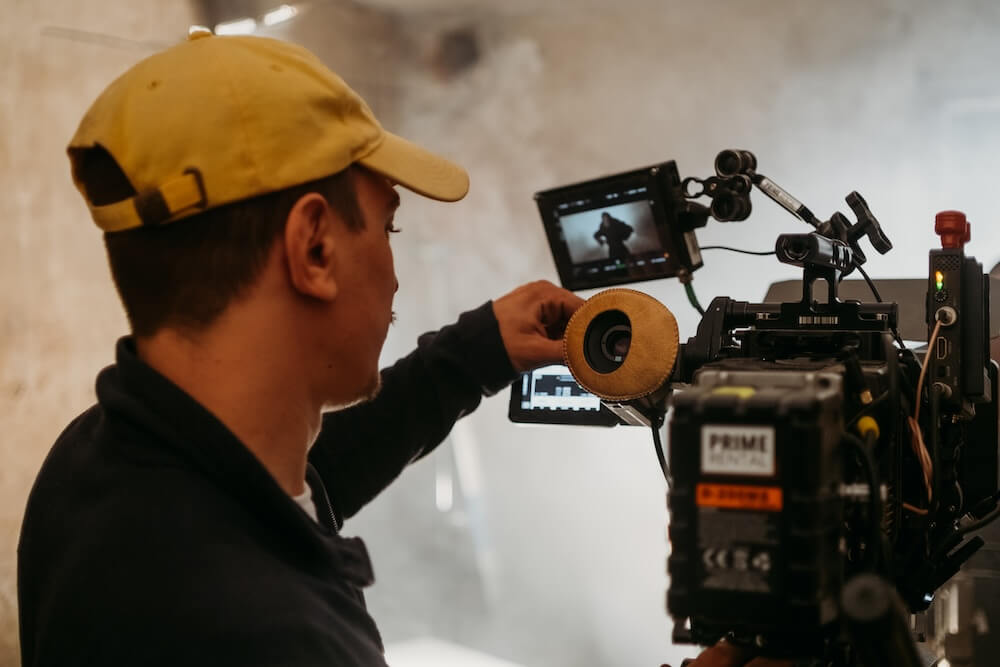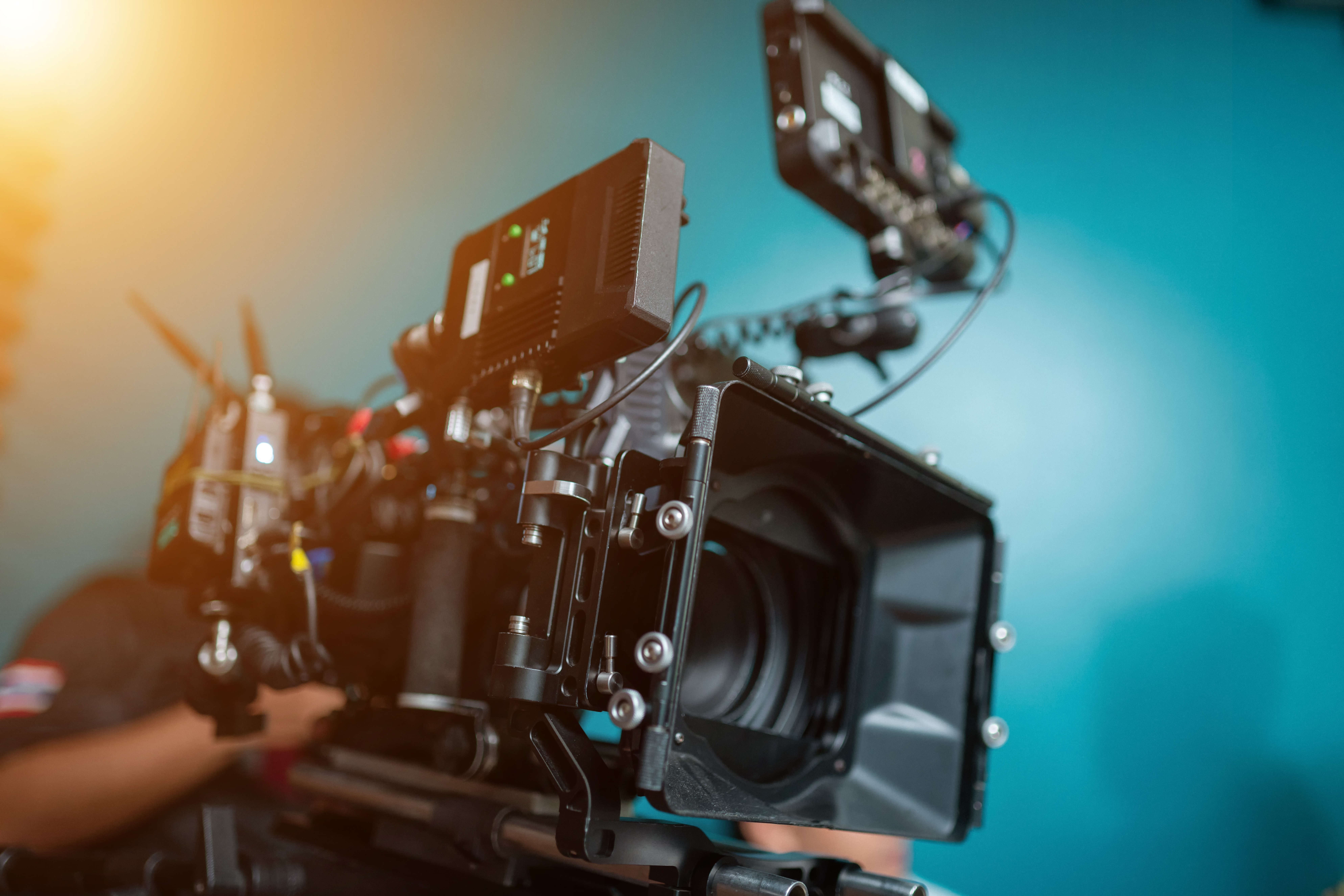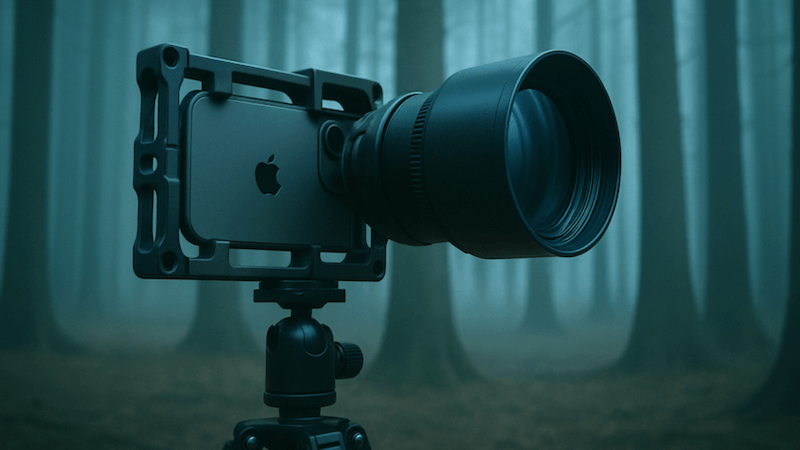Watching a movie in a theatre is an experience nothing else can match—and using new film formats, technology, and techniques to put butts in seats is almost as old as filmmaking itself. From Cinerama to Ultra Panavision 70, the film industry has always been at the cutting edge of camera technology.
Film formats, however, aren’t just a marketing hook. They’re also a storytelling device. And two of 2025’s most anticipated films—Sinners and 28 Years Later—represent opposite ends of that spectrum, with one shot in massive IMAX and Ultra Panavision 70, the other on an iPhone 15 Pro Max.
But is bigger still better when it comes to movies? Or is the real power in how the format serves the story?
Table des matières
Large File Transfer for Film Editing
Fast, reliable transfer with no limits for in-house and remote editorial teams.
Storytelling Through Film Formats
Large-format movies have long been synonymous with sweeping, epic narratives, while smaller film formats—like smartphone cinematography—now drive new waves of realism and immediacy.
- Sinners is shot in IMAX and Ultra Panavision 70 and unfolds largely in one location: A juke joint in the rural South, newly opened by twin brothers. Large format here isn’t about showing more, it’s about making everything feel larger. This is where large format shines: In stories that want to feel biblical, even when they’re intimate.
- 28 Years Later, by contrast, uses the iPhone 15 Pro Max not just for flexibility, but thematic alignment. The long awaited follow up to the previous two films in the franchise is about survivors trapped in a quarantine zone years after a virus outbreak. It’s urgent, immediate, and told from the inside. While we’re still waiting on this film’s release, we’re betting the small format of an iPhone sensor is going to force us to live shoulder-to-shoulder with the characters.
Note: 28 Years Later looks like a true successor to 28 Days Later, which famously used consumer DV cameras for raw, unpolished realism.
The film format wars of the 1950s
Back in the 1950, when televisions first invaded people’s homes, movie theatres needed a reason to get butts back in seats. That’s partially why we saw a boom of film formats like:
- Cinerama: Three-projector ultra-wide experiences.
- Cinemascope: Widescreen images captured with anamorphic lenses.
- MGM 65: Famously used on films like Ben-Hur and Mutiny on the Bounty.
Today’s IMAX resurgence and iPhone indie explosion are echoes of that era. The tools have changed, but the goal is the same: To draw viewership to movies by making something extraordinary.
Marketing the medium
These two films are far from the first time camera choice and movie film formats have been used as a selling point:
- 28 Days Later pushed its DV look to ground the outbreak in a horrifying realism.
- Slumdog Millionaire pushed the envelope with 2K cameras recording to laptops in backpacks.
- The Dark Knight broke ground by touting its IMAX shot sequences.
- Top Gun: Maverick, Oppenheimeret Dune all used large film formats, partially to hype the spectacle.
Sinners and 28 Years Later are playing the same game, but from opposite sides: One film leans on large format film’s legacy, spectacle, and complexity; the other, on the immediacy, accessibility, and impressive features of a consumer device.
Film Formats: IMAX vs. iPhone
IMAX
There’s nothing subtle about IMAX or Ultra Panavision 70. These motion picture film formats bring with them epic resolution, a colossal image area, and enough dynamic range to sculpt light like a Renaissance painter. It’s no wonder these formats have stayed as the go-to for directors looking to evoke awe and gravitas.
But shooting on large format film comes with equally large headaches. The cameras are massive, heavy, and loud. They require reinforced support systems, larger dollies, oversized gimbals, and in some cases, custom rigs. Loading and unloading film isn’t just a task—it’s a ritual. A dedicated film loader handles 65mm or 70mm stock, threading it through massive magazines by nothing but touch and feel. Every minute of footage has a real, tangible cost.
Advantages:
- Epic resolution and monumental visuals.
- Massive dynamic range for nuanced color work.
- Cinematic weight—it just feels important.
Disadvantages:
- Camera size + noise = logistical hell.
- Film stock + digital scan = expensive.
- Sound issues require heavy Automated Dialogue Replacement (ADR) in post.

iPhone 15 Pro Max
The iPhone 15 Pro Max is pretty much the exact opposite: A camera you can pull out of your pocket, but one that can still require serious customization to work on a professional set. On the surface, the advantages are obvious: Portability, affordability, and the ability to move quickly in spaces that traditional cameras simply can’t go. The iPhone can go places IMAX rigs wouldn’t even dream of.
But while the iPhone’s camera body is light, making it production-ready is a different story. The iPhone has to be built out with cinema lenses, rails, and a cage to add wireless follow focus, external monitors, wireless video transmitters, audio recorders, battery packs, and more. Suddenly that featherweight smartphone starts looking like a small-scale FrankenRig.
It’s a slightly janky setup, especially when you consider the single USB-C port. This pales in comparison to the plethora of connectivity options on even a modern mirrorless camera. Add on the rolling shutter and the smaller dynamic range, and you’ve got more than a few technical challenges to overcome.
Advantages:
- Insane mobility: Easily shoot in stairwells, tight rooms, alleys, and moving cars.
- Cost-efficient: Ideal for fast setups and on-location shoots.
- Gritty realism: Get in and stay with the action with a lightweight camera body.
Disadvantages:
- Low-light issues sand rolling shutter: Nothing screams consumer camera than a wobbly under- or over-exposed image.
- Limited lens control: A fixed aperture and tricky mounts for cinema lenses.
- Not enough ports: A single USB-C Port for video, external recording, and power.
On-set Crew Realities
IMAX
Working with IMAX and 70mm film requires a disciplined and experienced crew.
A film loader—someone who can load massive rolls of 65mm or 70mm stock with zero room for error—is a non-negotiable role. These rigs are bulky, delicate, and require serious infrastructure: Reinforced cranes, heavy-duty dollies, camera cars, and more.
Lighting setups must account for the massive image area and space needed to support the gear. Sound recordists are often sidelined by the noise of the cameras themselves, requiring dialogue to be re-recorded in post.
Film loader: Critical. One light leak, and it’s catastrophic.
Son: Loud cameras can lead to a lot more ADR and sound design.
Lighting/grip and electric (G&E): Heavy camera rigs and more lights mean more resources.

iPhone 15 Pro Max
The iPhone 15 Pro Max brings a totally different cadence to the set. Its size and agility mean directors and DPs can move quickly, adapt on the fly, and shoot in spaces traditional cameras simply can’t access. But to make the iPhone production-ready, it needs to be built out with the accessories we mentioned earlier.
Digital imaging technicians (DITs) working with iPhone footage navigate a different set of problems. There’s only one USB-C port, so offloading and charging can’t happen simultaneously without workarounds. Camera-to-cloud workflows might make sense if mobile data weren’t so expensive, or if setting up WiFi on a constantly moving set weren’t such a pain.
The iPhone can make the set more nimble, but it doesn’t eliminate the need for precision—it just moves it around.
- Son: No built-in pro audio—syncing required.
- Lighting: A small sensor with lots of megapixels needs more light for better image quality and less noise.
- DIT: Hard-to-wrangle footage with a single port for offload, storage, monitoring, and power.
A Tale of Two Post-Production Workflows
IMAX
The post workflow for film starts in the lab, not in the edit suite. Every reel of film must be developed, cleaned, and inspected before it’s scanned into a digital format. That scan is typically done at 6K, 8K, or higher, resulting in massive image sequence files.
These files require dedicated storage infrastructure and must be transcoded into an editable format before offline editing can begin. Proxy files are often generated to make the editorial process more manageable, while full-resolution files are reserved for color grading and VFX.
Colorists working with scanned film have incredible latitude, but need an equally powerful workstation and performant storage to play back high-resolution image sequences.
Visual effects teams have to work in ultra-high resolution, where every detail—good or bad—is visible. Sometimes those effects are rendered at an eye-watering 8K resolution, taking more render power than your MacBook Pro could ever aspire to.
Audio post adds another layer of complexity. Because production audio is often compromised by the loudness of the cameras, the ADR and sound design process is extensive. Sometimes actors are required to re-perform dialogue with precision and editors and mixers have to spend hours recreating soundscapes from other production recordings.
- Massive scans: Massive storage needs in post-production.
- L'étalonnage des couleurs: Need a powerful workstation to handle massive file sizes.
- VFX: Same as above; effects rendered at insanely high resolutions to be scanned back to film.

iPhone 15 Pro Max
We can skip the lab entirely when using an iPhone: Capturing images in 4K ProRes means the footage is ready for editing much faster than developing and scanning film. That speed is a huge advantage, especially when fast turnaround is crucial. But the trade-offs reveal themselves quickly.
Color grading iPhone footage has its own quirks. The sensor limitations and in-camera processing can introduce noise, aggressive sharpening, weird compression, and unnatural highlight roll-off. Colorists need to work harder to tame the image and shape it into something cinematic.
Shooting in Apple Log bypasses most of the in-camera processing and adds more dynamic range. But the sensor is less forgiving, and you will struggle to recover detail in shots that are mistakenly over- or under-exposed.
VFX teams, while benefiting from a lower resolution, must still manage rolling shutter artifacts, limited dynamic range, and noise. In short, the post workflow is faster out of the gate but requires finesse and extra care.
Since the iPhone can be rigged with tools to sync audio and monitor focus and exposure, its weak points in post-production really come down to one major differentiator: Image quality. And that makes it hard for colorists and VFX artists to integrate and make their work seamless.
- Color grading + VFX: Can be limited based on the dynamic range, noise, and rolling shutter.
Move Massive Batches of Any Film Formats With MASV
From Cinerama to CinemaScope to the phone in your pocket, filmmakers have always used motion picture film formats as a weapon and a canvas — to stand out, to tell better stories, and to bring audiences back to the theatre. Today, those choices are more varied and powerful than ever. When you choose your format, you’re also choosing how your story is felt, how your crew operates, and how your film will be remembered.
So what’s your flavor: 70mm majesty or mobile madness? Either way, you’re going to generate a mountain of data. MASV moves that data anywhere in the world — fast, secure, and ready for post before you’ve even called “action” – and you can s'inscrire gratuitement right now.
Améliorez votre flux de travail de post-production
MASV delivers heavy files faster and more reliably than you ever thought possible.